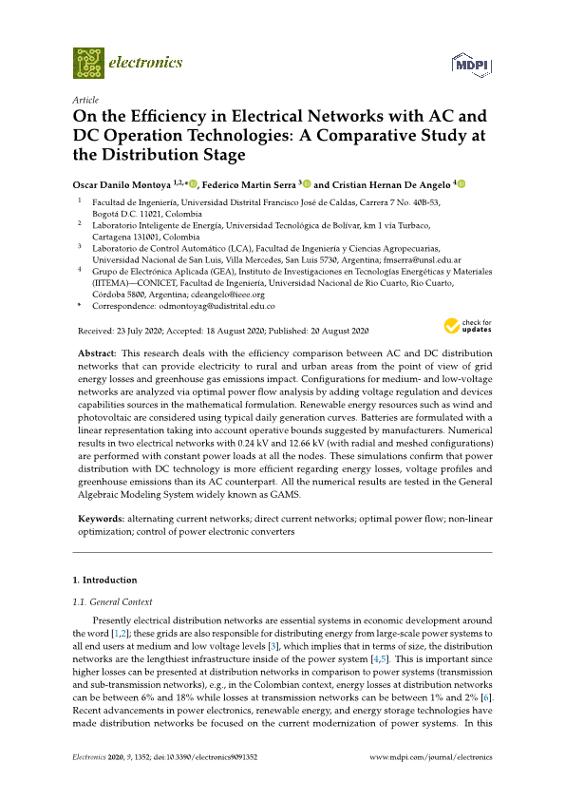Abstract
This research deals with the efficiency comparison between AC and DC distribution networks that can provide electricity to rural and urban areas from the point of view of grid energy losses and greenhouse gas emissions impact. Configurations for medium- and low-voltage networks are analyzed via optimal power flow analysis by adding voltage regulation and devices capabilities sources in the mathematical formulation. Renewable energy resources such as wind and photovoltaic are considered using typical daily generation curves. Batteries are formulated with a linear representation taking into account operative bounds suggested by manufacturers. Numerical results in two electrical networks with 0.24 kV and 12.66 kV (with radial and meshed configurations) are performed with constant power loads at all the nodes. These simulations confirm that power distribution with DC technology is more efficient regarding energy losses, voltage profiles and greenhouse emissions than its AC counterpart. All the numerical results are tested in the General Algebraic Modeling System widely known as GAMS.














